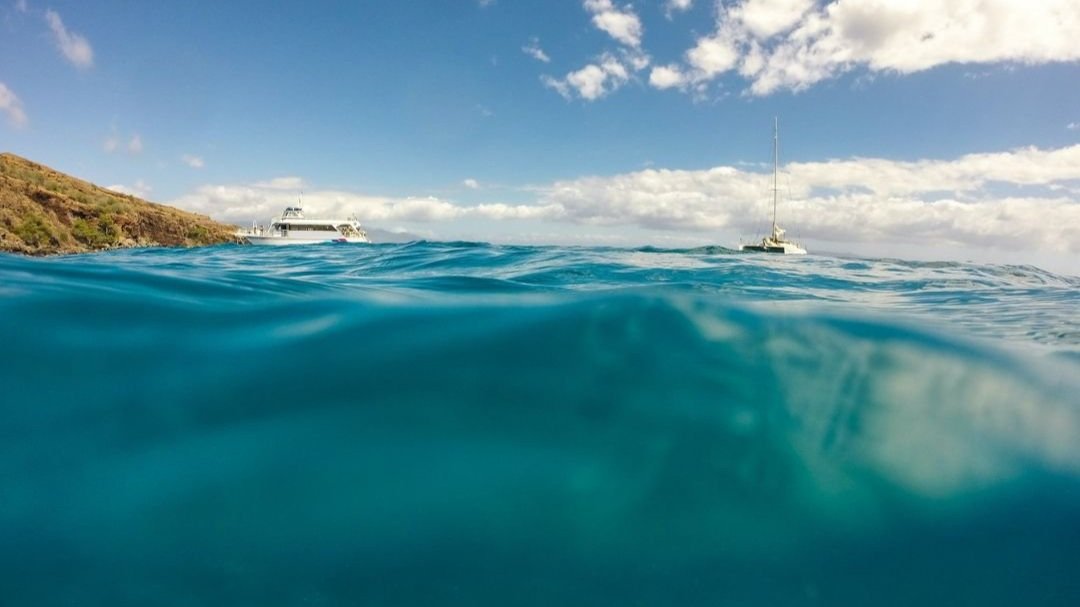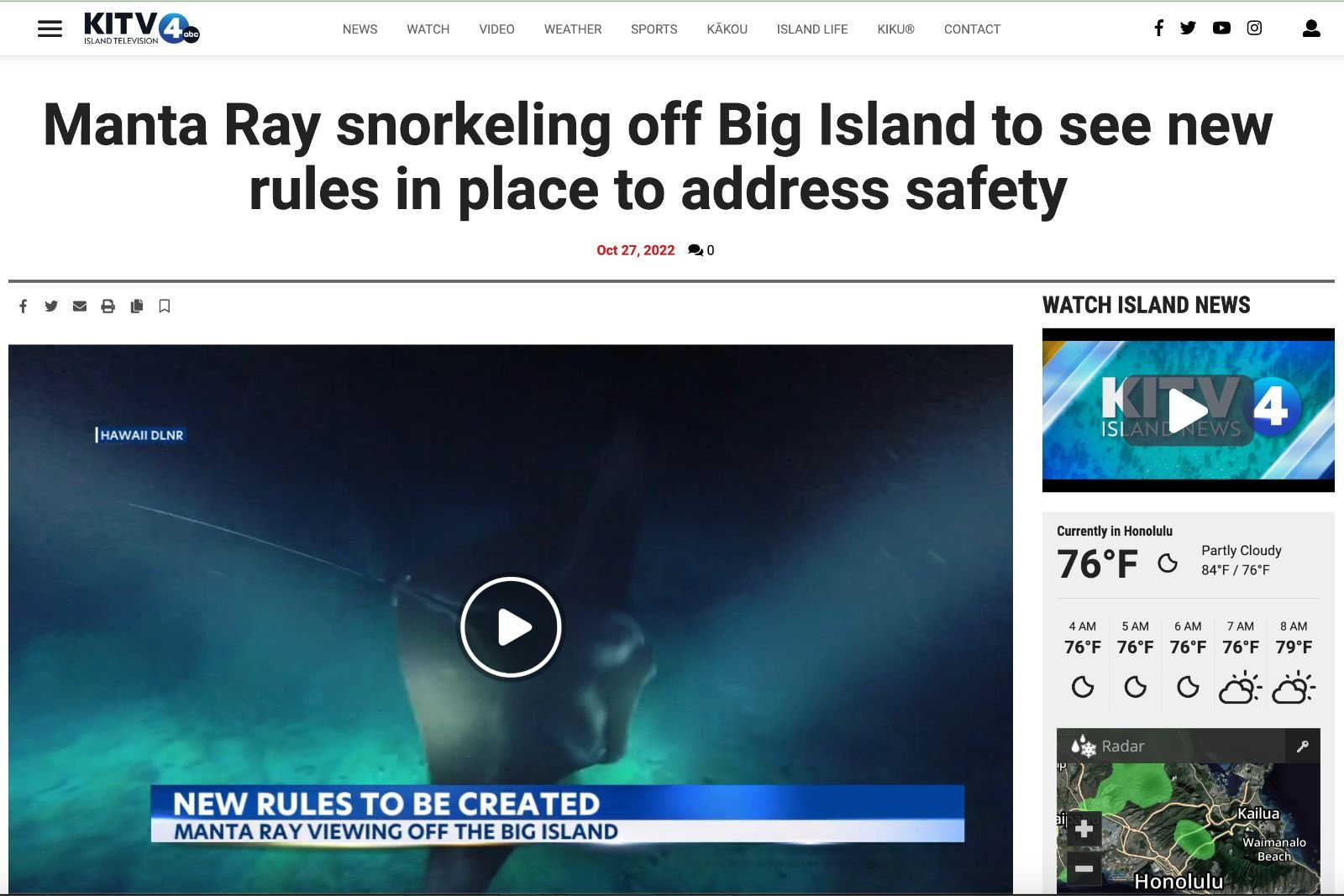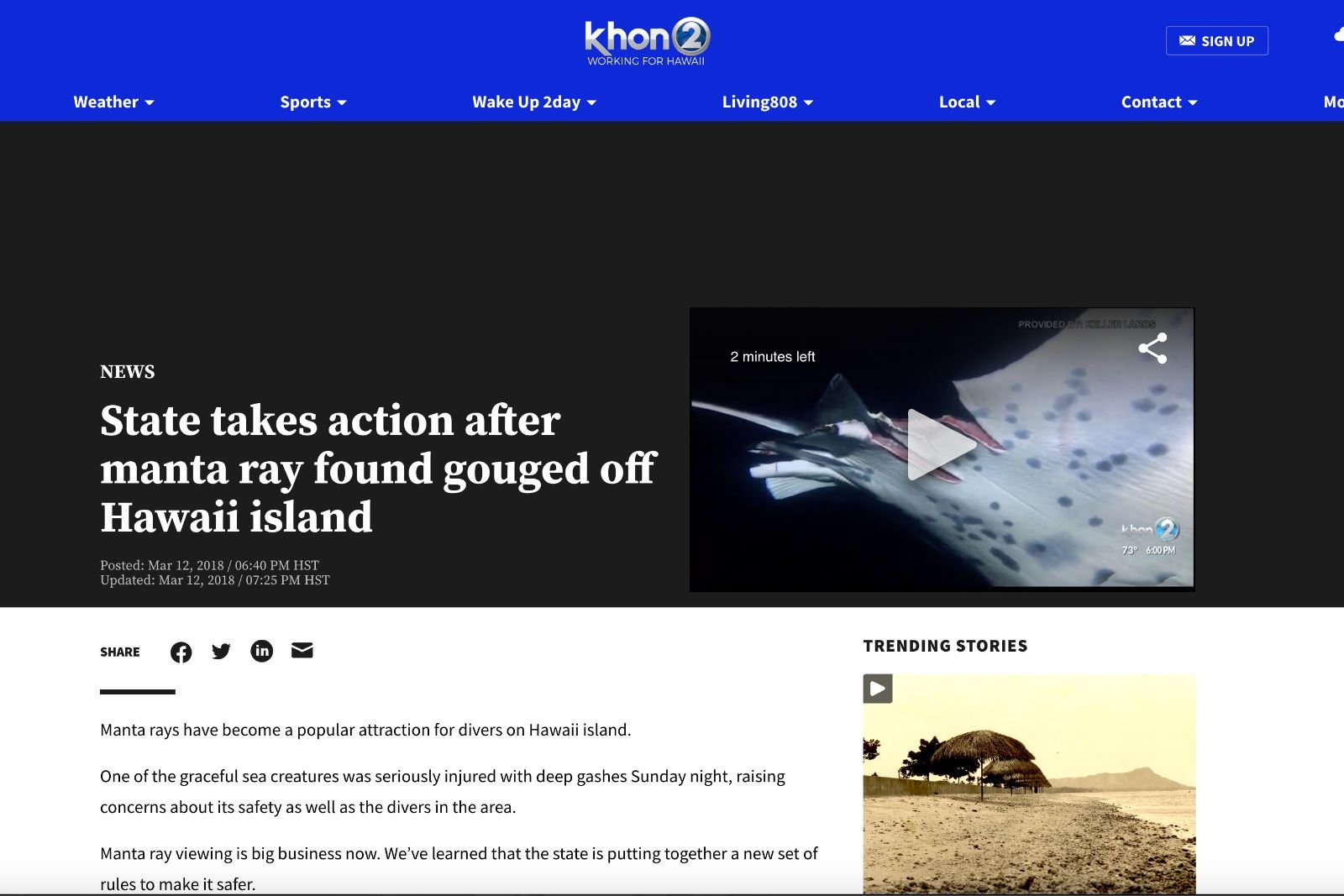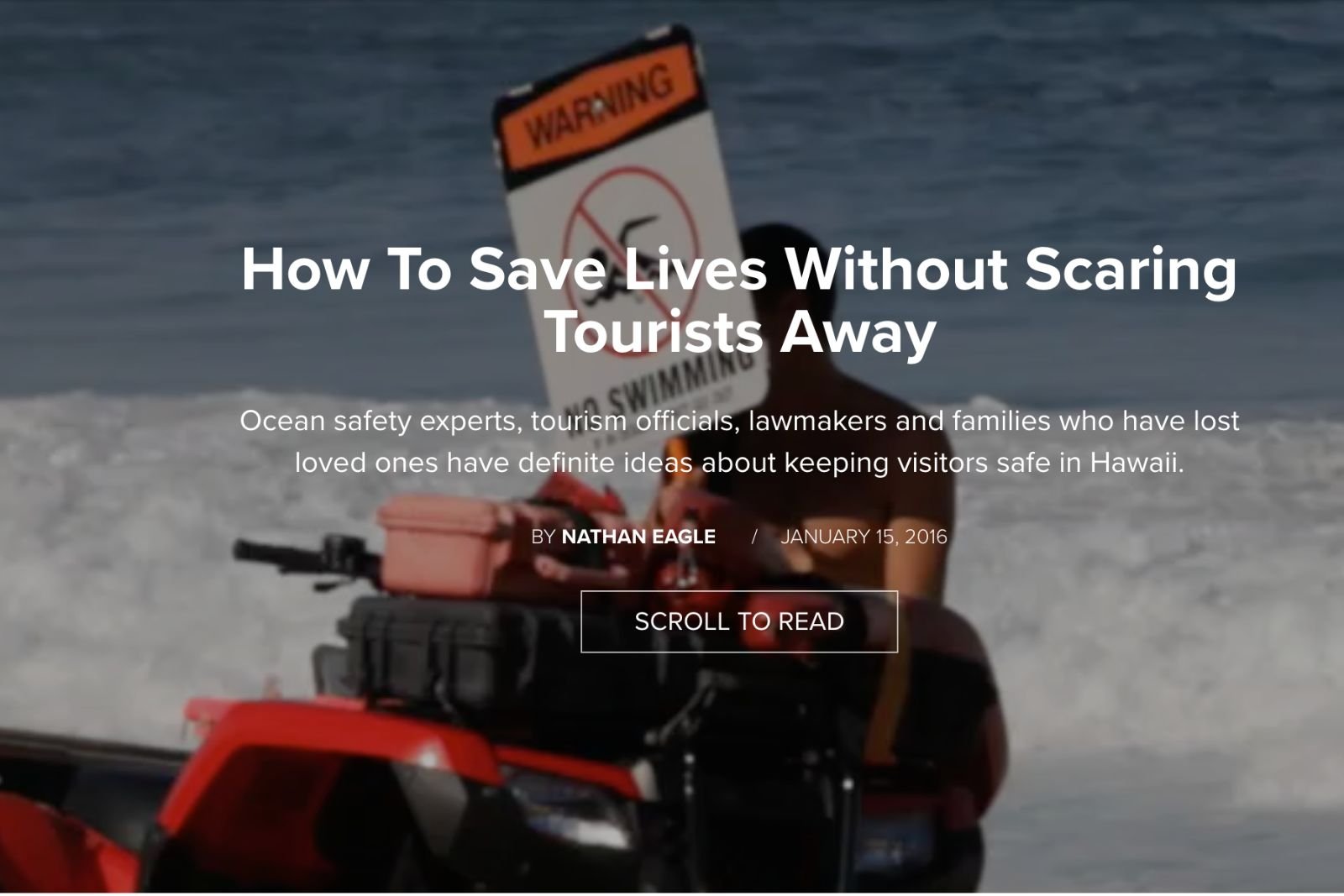
We are loving manta rays to death.
-

25% of the mantas we regularly see show some kind of injury caused by humans
-

Less than 50% of the manta tour operators comply with industry standards
-

100% of manta rays, participants, and crew are at risk of injury or death due to overcapacity at the viewing sites
Manta rays are majestic and impressive creatures; spending time with them in the water is truly a life-changing experience.
But the manta ray tourism industry has been growing beyond capacity.
Swimming with manta rays in Hawaii at night is limited to the two publicly accessible manta viewing sites, where tour boats and their passengers, snorkelers, scuba divers, kayakers, paddle boarders, and other ocean dwellers congregate to experience the Gentle Giants of the Sea.
This has been building up to an unsafe and unsustainable situation, and we need your help to improve these conditions.
Help us turn the situation around
-

Raising awareness
Tell friends and family about the situation, and about the “greenlist” of manta activity providers
-

Changing policies
We urgently need enforceable rules of conduct in place. Help us to get things moving!
-

Volunteering
Put your creative, writing, or project management skills to good use - there’s something for everyone!
-

Donating
A little bit can go a long way. From a one-time gift to monthly donations, every contribution counts!

The dangers of manta ray tourism
What does that mean?
-

For manta rays
Manta rays are getting injured or killed by running propellers. Some boats also use hull lighting that attracts the mantas and brings them on a collision course with their hardware.
-

For participants
Tourists get hurt or die every year in Hawaii - getting hit by boats or propellers, due to a lack of awareness and preparation, or the inability of the crew to identify dangerous situations. Most of these accidents can be avoided.
-

For the Crew
Many captains and crew members are ill-equipped for the situation - lacking either experience, training, or both. Visitors aren’t the only ones getting hurt in the chaos, as the tragic death of dive master Theresa Butts in 2022 sadly demonstrated.
-

For Tour operators
Faced with the overcapacity of the manta viewing sites combined with a transient workforce, it’s increasingly difficult for manta activity providers to offer safe and sustainable manta ray tours.
-

For the Environment
Manta tour boats that can’t get a parking spot at the moorings drop their anchor on the coral reef - inflicting irreparable damage to it and getting mantas and other marine life entangled in anchor lines in the process.

It’s not just us saying that…
In the past 8+ years, studies showed (repeatedly) that manta ray tourism in Hawaii is unsafe and unsustainable.

“The least I can do is speak out for those who cannot speak out for themselves”
Imagine a busy night at the “Keauhou bay” manta site…
• 23 manta ray tour boats
• 2 kayak companies
• 4 moorings available - used by 8 boats, “daisy chained” to each other
• 10+ anchors thrown onto the coral reef, damaging it in the process
• Several boats using their hull lights, attracting manta rays to their propellers
• A dozen “live” boats maneuvering around groups of divers and snorkelers
• Approximately 330 humans in the water
• Big swells rolling in, making the boats on the moorings bump against each other (while there are swimmers and mantas all around them)
• In the middle of all that, 3 manta rays trying to feed in peace
Words like “unsafe” and “unsustainable”
do not even begin to cover the chaos.
What’s your experience?
We are collecting stories of encounters with manta rays so we can show the world the deep impact these wonderful creatures can have on human lives, and why the Gentle Giants of the Ocean are worthy of our protection.
If you’ve ever been snorkeling or diving with manta rays, we want to hear more about your experience - good or bad!
Timeline of manta ray tourism in Hawaii

What’s the holdup?
Why is there no legislation in place for manta ray tourism?
The International Union for Conservation of Nature Red List of Threatened Species provides a uniform platform for evaluating the risk of extinction of plant, animal, and invertebrate species. As of December 2020, Mobula birostris (oceanic/giant manta ray) is classified as “endangered” and Mobula alfredi (the reef manta ray we encounter at the viewing sites) is classified as “vulnerable with decreasing numbers”.
In 2009, the State of Hawaii established criminal penalties and administrative fines for knowingly killing or capturing manta rays within State waters (with exceptions for research and educational purposes). Unfortunately, there are no fines when it comes to other types of incidents - collision, harassment, or entanglement.
In 2014, the Hawaii House of Representatives adopted resolution HCR170. This resolution urges the Department of Land and Natural Resources (DLNR) to adopt rules to manage the manta ray sites. As of this writing (2023), draft rules are still pending and awaiting 11 separate steps of approval. This would take 11 months in a perfect world but in this one, new hurdles keep surfacing.
This is not a secret; it has been widely covered

How we are taking action
-

Tour Operator Standards
Hawaii Ocean Watch was one of the driving forces behind the creation of voluntary standards for the manta ray tourism industry.
-

Activity provider green list
We maintain a “greenlist” of manta tour operators who endeavour to make snorkeling and diving with mantas safer and more sustainable
-

Manta crew training
Hawaii-specific maritime skills training for (often seasonal) crew members - so operators can ensure a positive and safe experience for all
-

Sharing information
We collect and share information to help visitors, tour operators, media, and authorities understand the urgency of the situation















